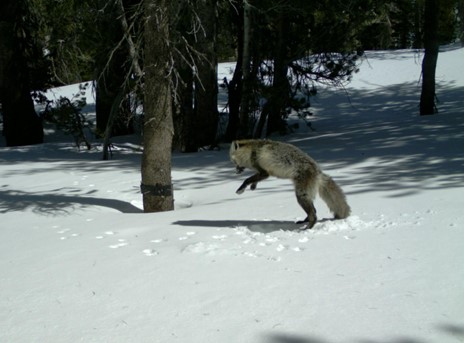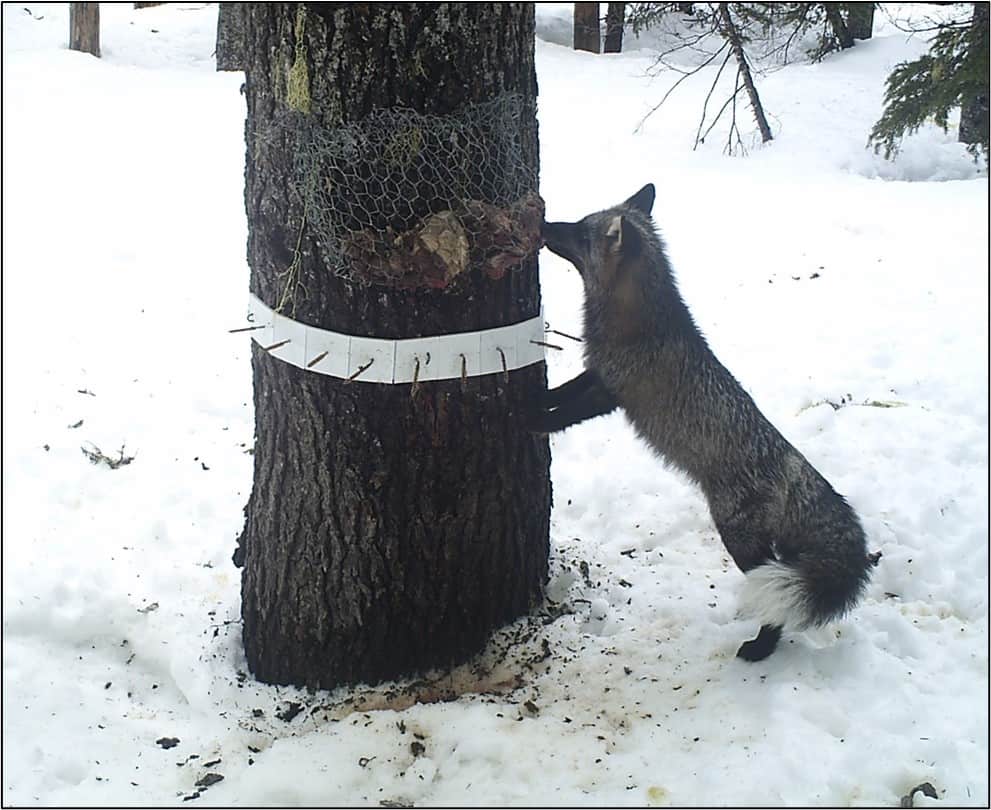Share this article
Wildlife Featured in this article
- Sierra Nevada red fox
- marten
- Rocky Mountain red fox
Searching new terrain for an endangered alpine fox
California researchers will use noninvasive techniques to learn about the Sierra Nevada red fox
Researchers are on their way to learning more about an endangered bushy subspecies of red fox that lives in small, isolated populations in the mountains of California and western Oregon.
There are two population segments of the Sierra Nevada red fox (Vulpes vulpes necator) —the Southern Cascades Distinct Population Segment in Oregon and northern California, and the Sierra Nevada Distinct Population Segment in California. The Sierra Nevada population was listed as federally endangered in 2021 when biologists estimated its population had dipped to only about 40 individuals. Since then, researchers continue to learn more about the subspecies in Oregon, but with so few Sierra Nevada red foxes actually in the Sierra Nevada, it’s difficult to collect data on the population there, like where the foxes live, how many there are and how they’re faring.
“Because of the listing, we were now eligible for Section 6 funding from the Fish and Wildlife Service that’s specifically for listed species or species that are potentially going to be listed and are candidate species,” said Chris Stermer, the montane carnivore conservation coordinator with the California Department of Fish and Wildlife.
As a result, the department—joined by partners including the Wildlife Ecology Institute, Sequoia and Kings Canyon National Park and the U.S. Fish and Wildlife Service—received a federal grant to learn more about the species in California. Biologists in Oregon also plan to share their knowledge from research on the foxes that has been done there.
By combining what they continue to learn about the species in both Oregon and California, biologists can “have a greater overall impact for recovery,” said Tim Hiller, executive director at the Wildlife Ecology Institute.
In 2010, biologists conducting surveys on marten (Martes americana) discovered the foxes along the Sonora Pass in the Sierra Nevada of California north of Yosemite National Park. Since then, maps have identified where the foxes have been found throughout Yosemite. The researchers now plan to model potential habitats in the Sierras, in search of areas where additional surveys might turn up the animals. That includes parts of Sequoia and Kings Canyon National Park and areas north of Sonora Pass.
Using the models, the researchers plan to use camera trap stations in places where the fox hasn’t been surveyed. “A lot of remote, backcountry work will be needed to get the cameras back where we want them,” Stermer said.

They will also collect scat and hair samples at bait stations to confirm they’re dealing with the target species and not something like Rocky Mountain red foxes (Vulpes vulpes macroura), another subspecies found in the region.
Hair samples can also tell them more about the population’s genetic diversity, whether individuals are males or females and other important information. They are also seeking additional funding to also allow them to use detection dogs to find red fox scat. This research could also uncover dispersal patterns between red foxes and if there has been any interbreeding between subspecies.
“The short-term goal is to determine whether Sierra Nevada red foxes are present in unsurveyed areas,” Hiller said. Then, he said, there may be a decision to make regarding translocating individuals for either reintroduction or population augmentation and to preserve the genetic makeup of the Sierra Nevada red fox.
That kind of work is already occurring in Lassen Volcanic National Park in northeast California, Stermer said, but for more dire reasons. The population there has low genetic diversity and is inbred. “We are still discovering the status of the Sierra Nevada population, but the Lassen population is in big trouble.”
Header Image: Baited camera stations will include a device to collect fox hairs for DNA analysis. Credit: Courtesy Tim Hiller/Wildlife Ecology Institute








